One morning while I was working on the computer, I heard the voice of one of our female hairy woodpeckers that comes to the bird feeders quite frequently. In addition to this familiar voice, I heard a second woodpecker as well. This voice was much louder and very persistent. I also noticed our female hairy woodpecker was coming to get suet, but not consuming it. Instead, she was bringing it to the backyard. I was hoping she was going back to a nest. I decided to grab my camera and binoculars and go investigate the situation.
On one side of the property, there are a few dead trees, some that have fallen and others that are still standing. As I made my way to the back, sure enough in one of the standing dead elms, I discovered a hairy woodpecker nest cavity. I was able to see where and who all the noise was coming from. Coming out from the cavity was the little head of a young hairy woodpecker. This was quite an exciting discovery! I wasn’t able to get as close as I wanted to, because of all the underbrush and I also didn’t want to disturb the nest.
I was able to get a few photographs and a video of the woodpecker’s activities. The following photographs were taken over a two-month period. I was able to see and hear only one of the young from my vantage point and I’m not sure if there were any more. Over the next few weeks, I had taken several photographs of the young woodpecker interacting with his parents and his progress after leaving the nest. He spent a great deal of time with his mother after leaving the nest and is now coming to the feeders on his own. He is actually coming to the feeders more frequently than his mother. The following photographs are a sort of timeline of his growth so far this season.
A Hairy Woodpecker Nesting Cavity
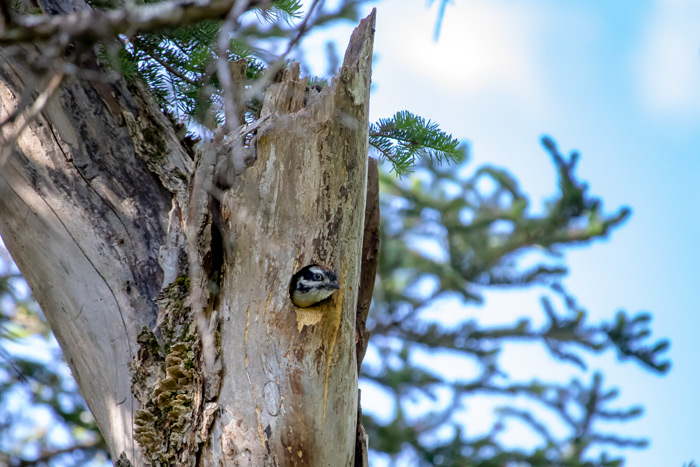
Hairy woodpeckers Picoides villosus will typically excavate their nests in the dead stub of a living tree, especially trees with heartrot, or in a dead tree.

A mother hairy woodpecker feeding her young. When the young are a few days old, they will make their presence known in the nesting cavity as they beg for food with a loud, distinctive and raspy call.
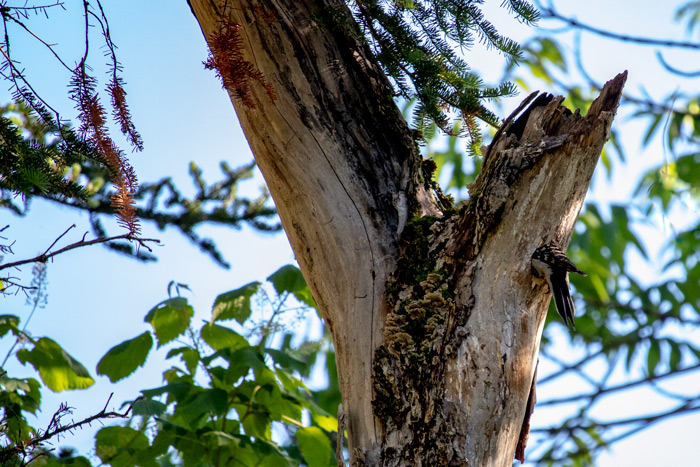
A mother hairy woodpecker entering the nesting cavity. The entrance to the nest is about 2 inches tall and 1.5 inches wide, leading to a cavity 8-12 inches deep. The inside is wider at the bottom in order to make room for the eggs and the incubating parent. The space is bare except for a bed of wood chips at the bottom for the eggs and chicks to rest on.
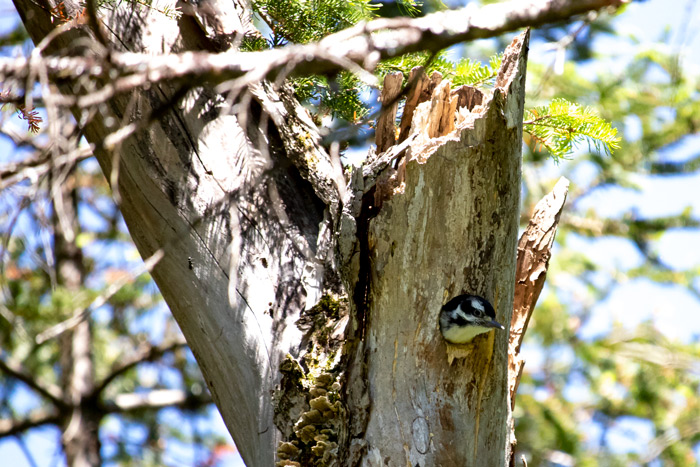
A young hairy woodpecker peeking out of its nest cavity. Incubation will last about 11-12 days and the young woodpeckers leave the nest about 28-30 days after hatching.
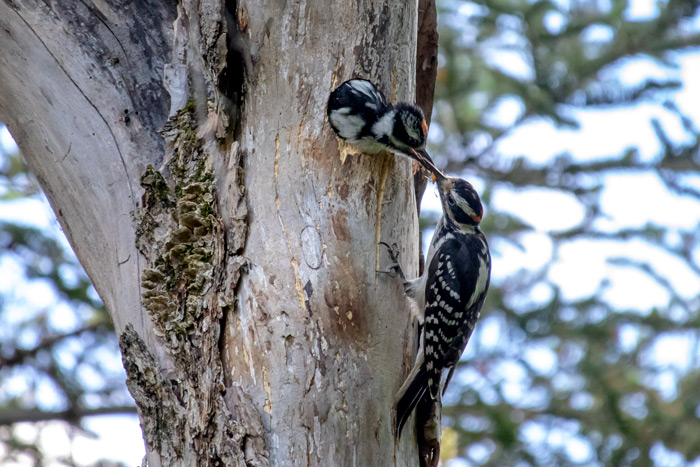
A hairy woodpecker feeding his young. Both parents feed the nestlings. The male may forage farther from the nest, making fewer feeding trips with more food each time.
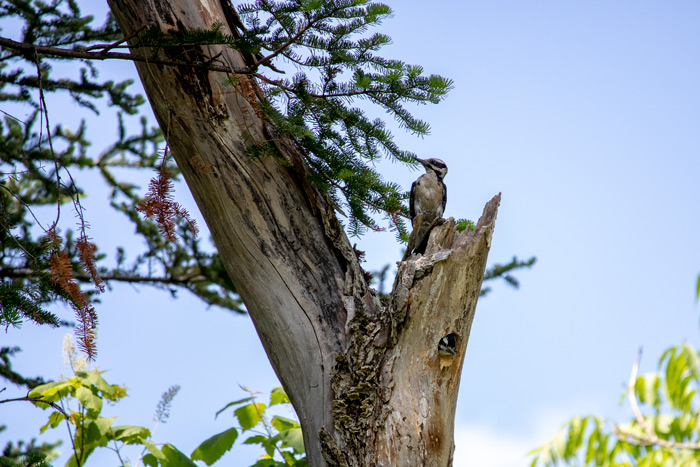
Both the male and female incubate the young. The male will sit on the eggs and broods the young during the night The female relieves him every morning and they alternate these duties throughout the day.
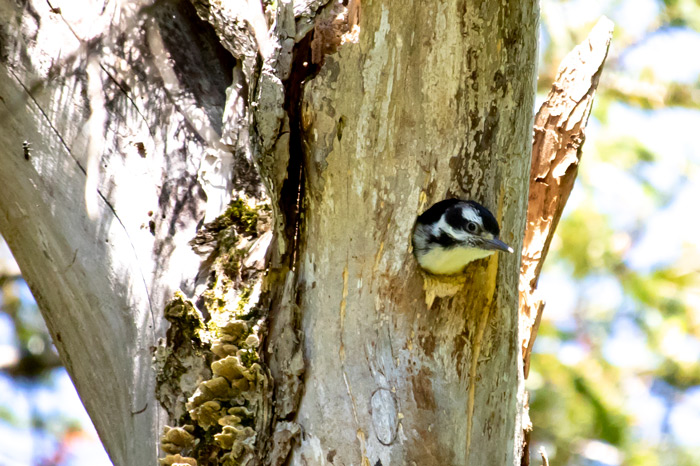
The usual clutch size for the hairy woodpecker is 3-6 eggs and there will only be one brood per year.
A video of the hairy woodpeckers feeding their young hairy woodpecker in the nesting cavity:
The Young Hairy Woodpecker with Its Mother
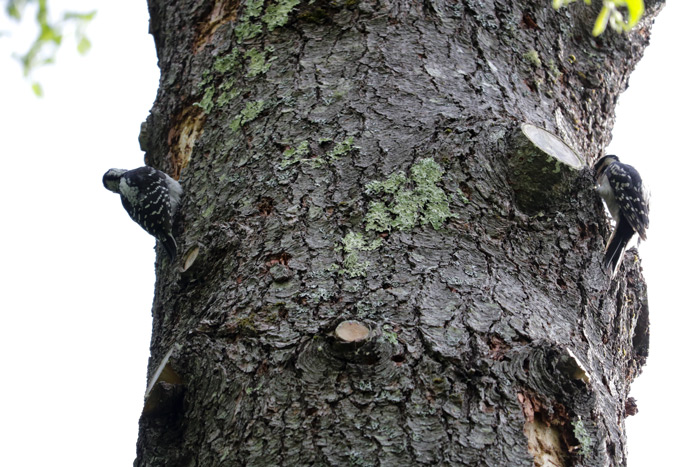
A young hairy woodpecker and mother foraging for insects on an eastern white pine tree Pinus strobus.
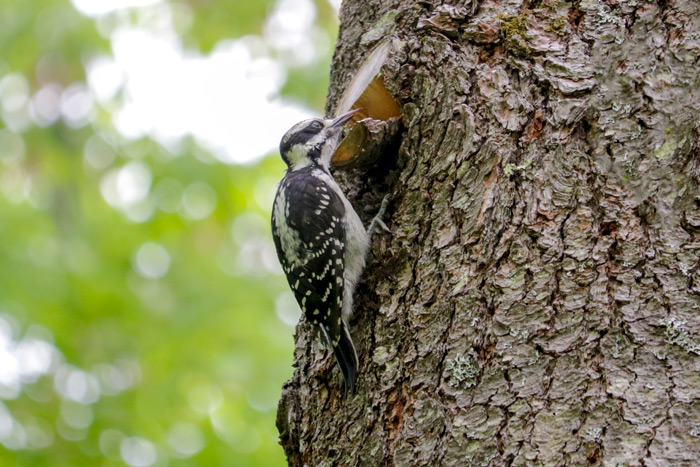
A young hairy woodpecker with its tongue sticking out.
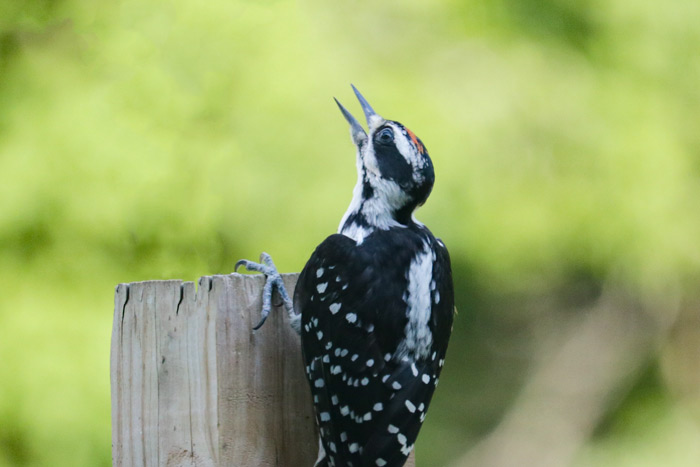
A young hairy woodpecker perched on a wooden post.
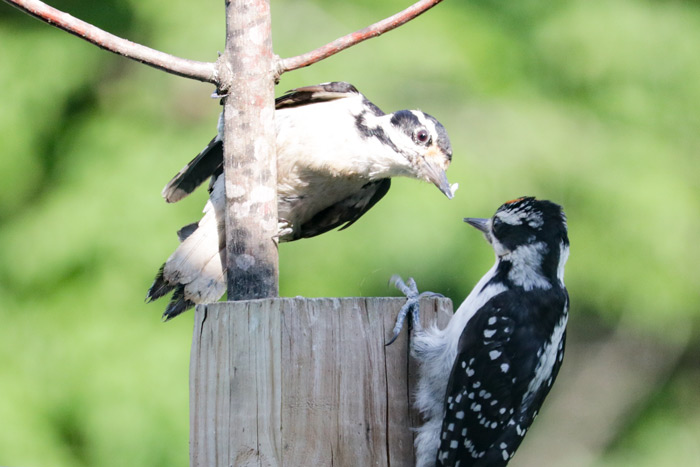
A mother hairy woodpecker Picoides villosus, feeding suet to her young.
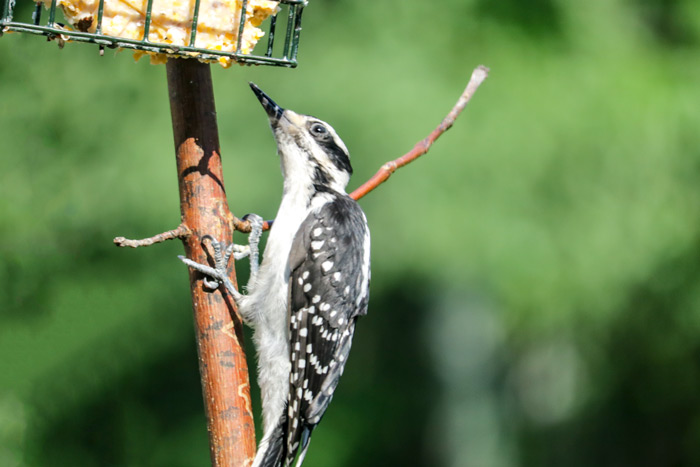
A young hairy woodpecker eating from the suet feeder.
The Young Woodpecker Eating On Its Own
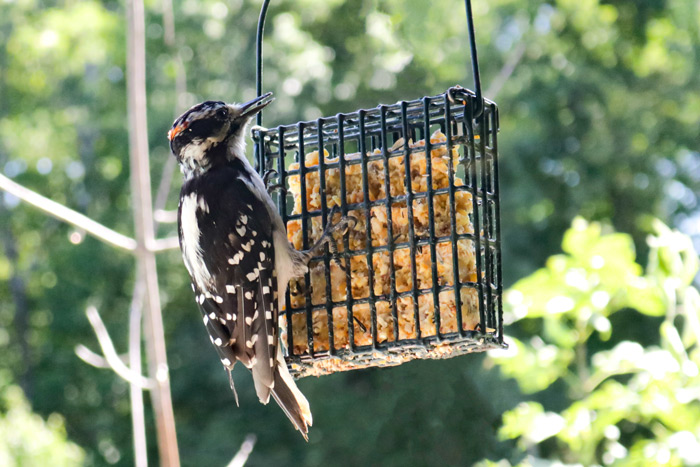
A young hairy woodpecker visiting the suet feeder on its own.
It has been really great to see this young woodpecker grow up and I hope to see more of him at the feeders in the future.
Resources used for this post:
allaboutbirds.org & audubon.org
Leave a Reply